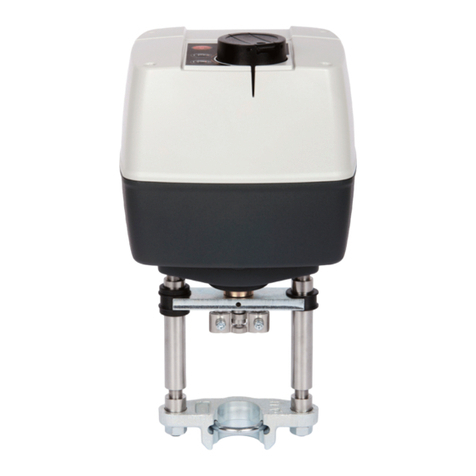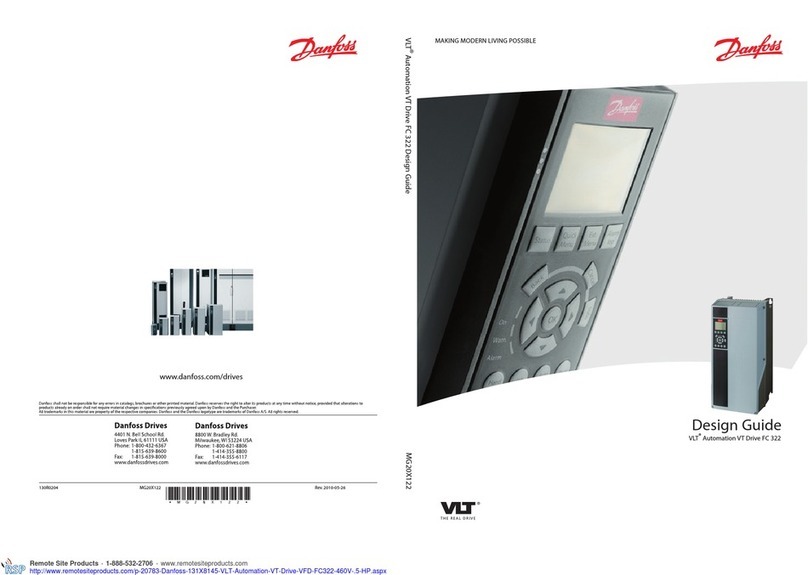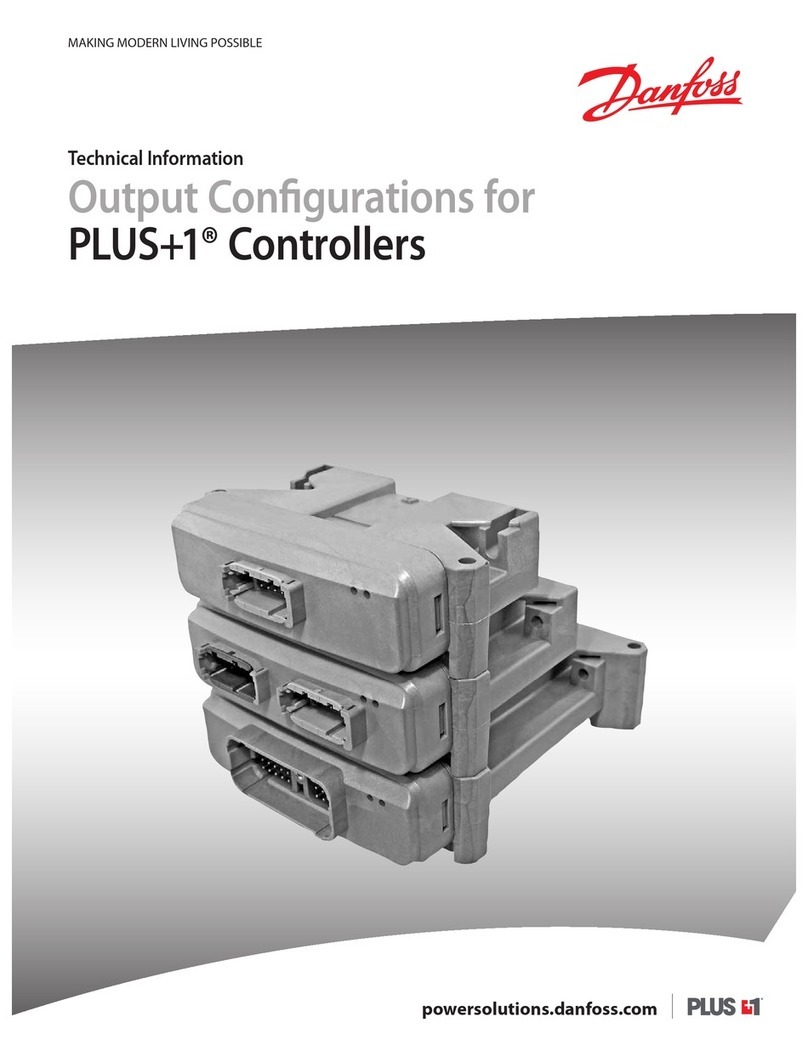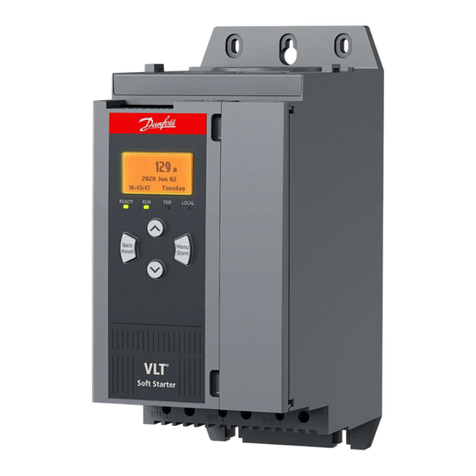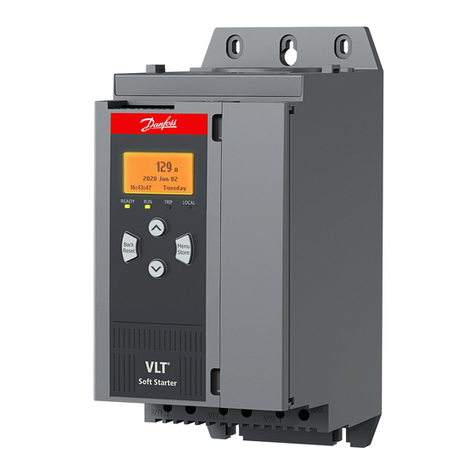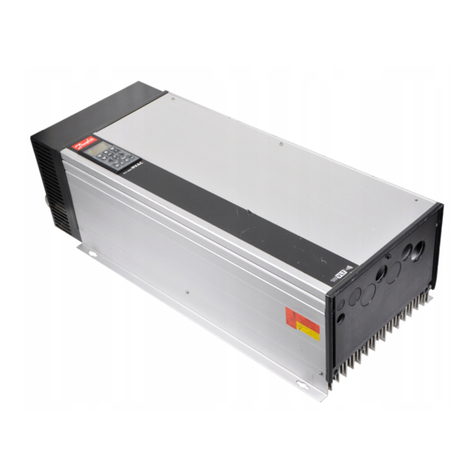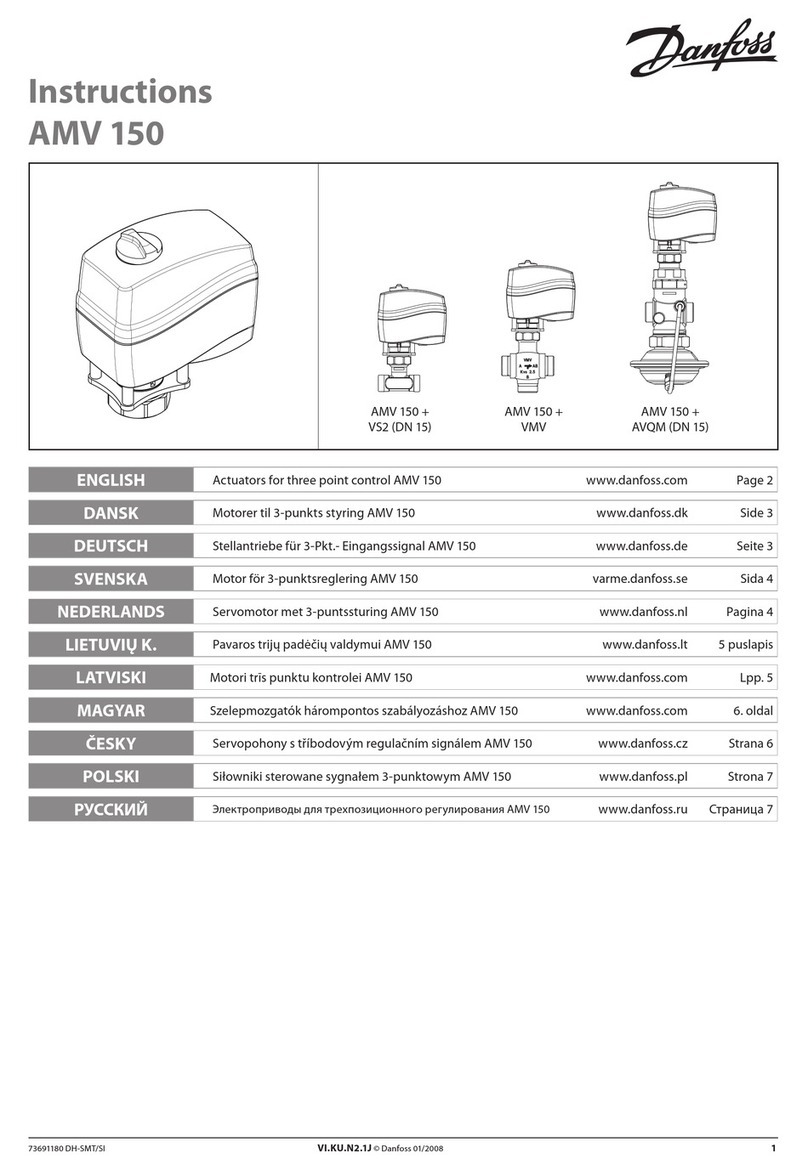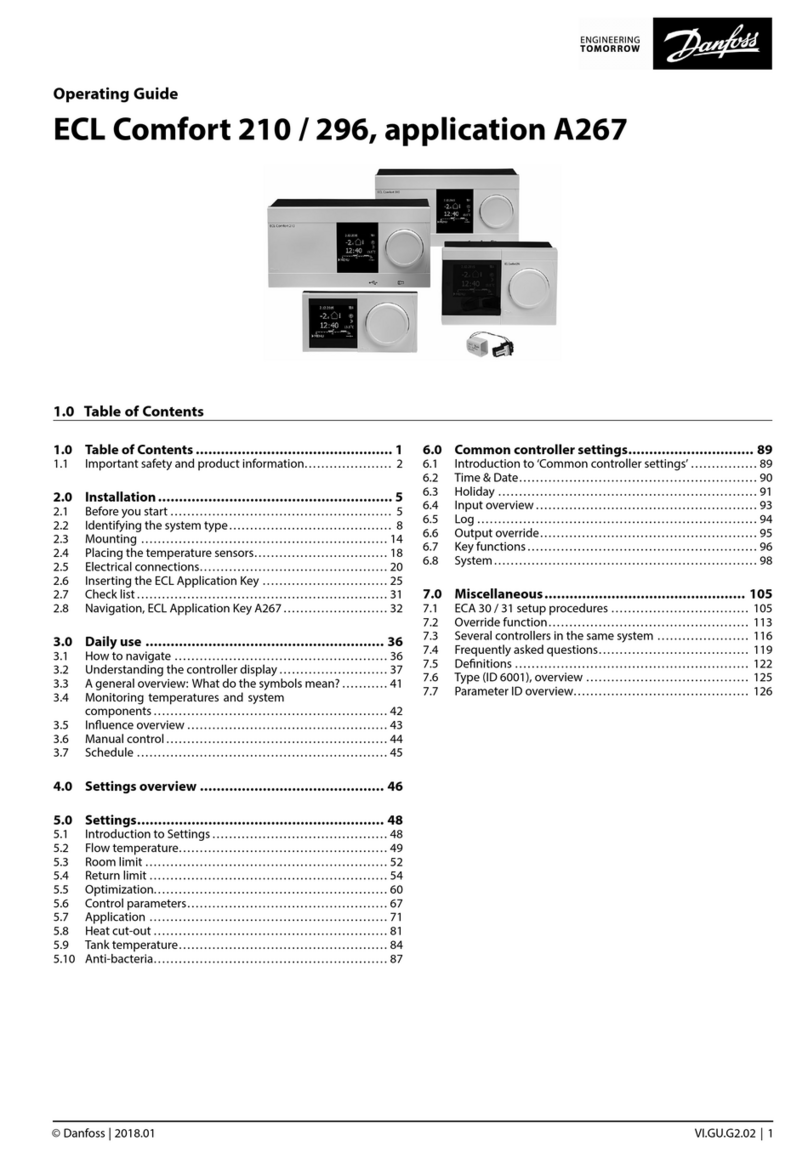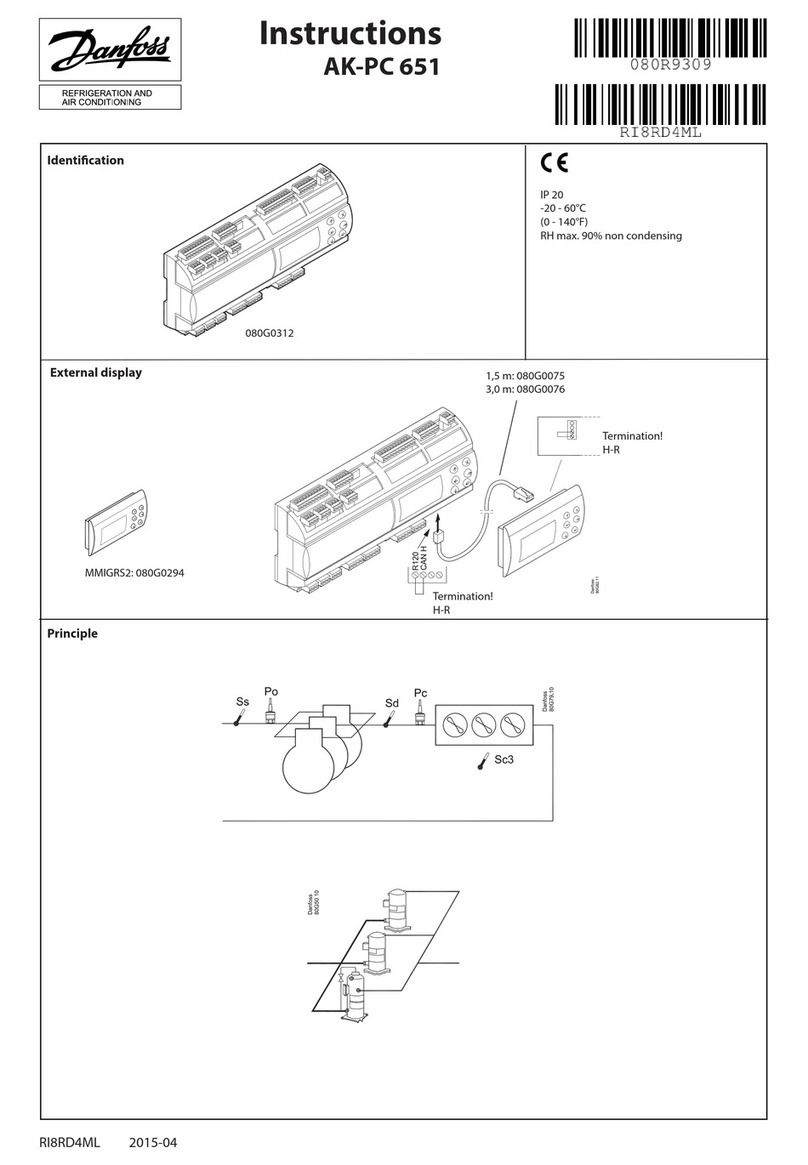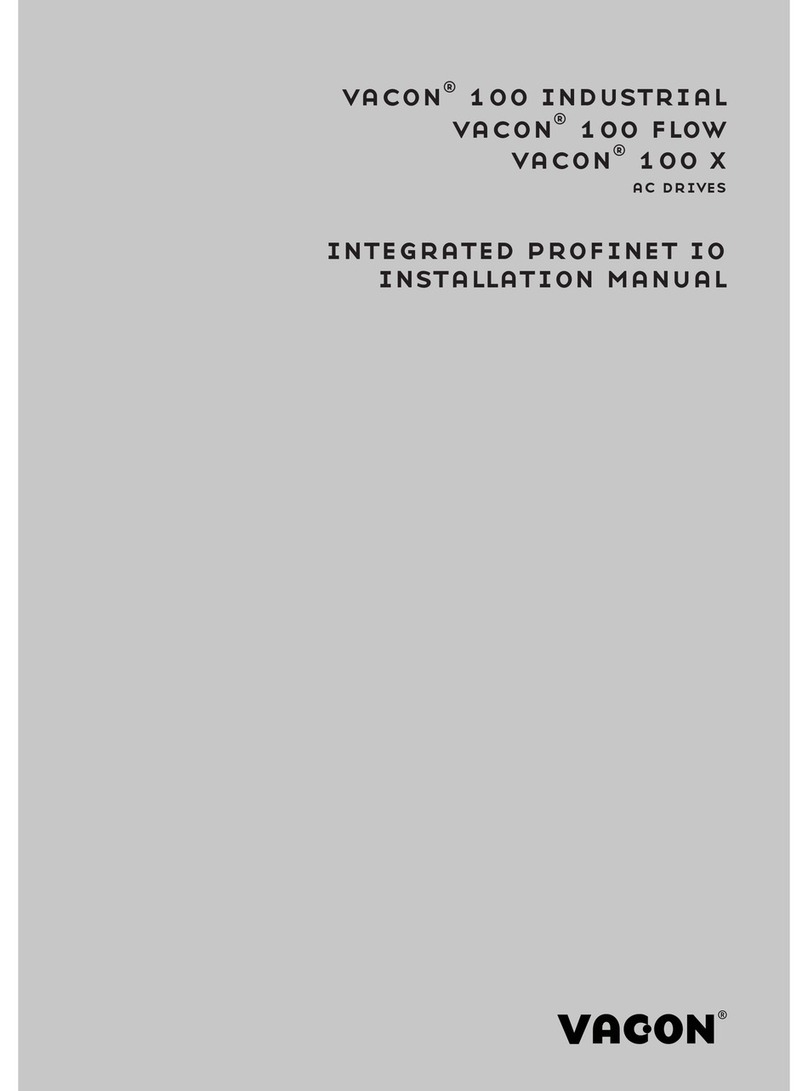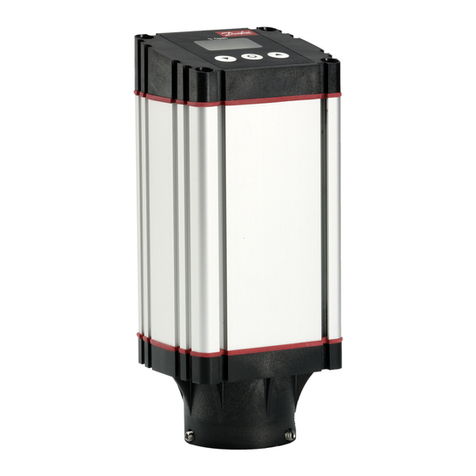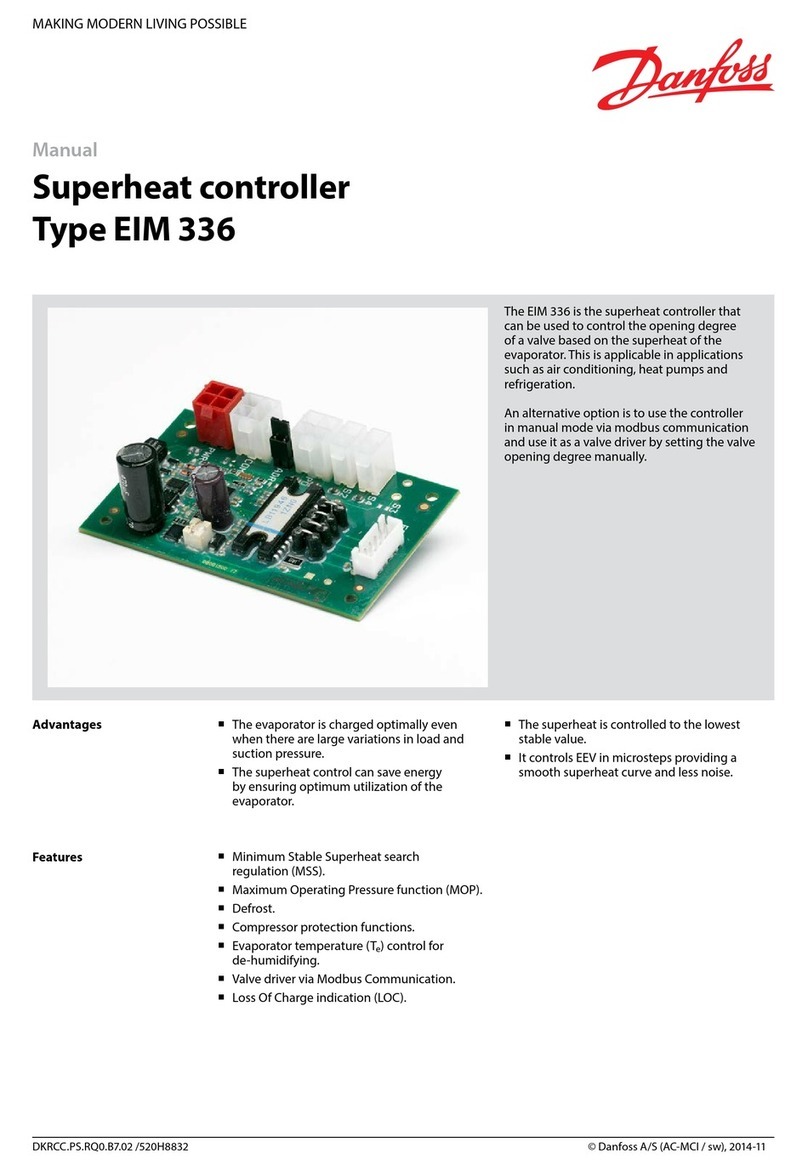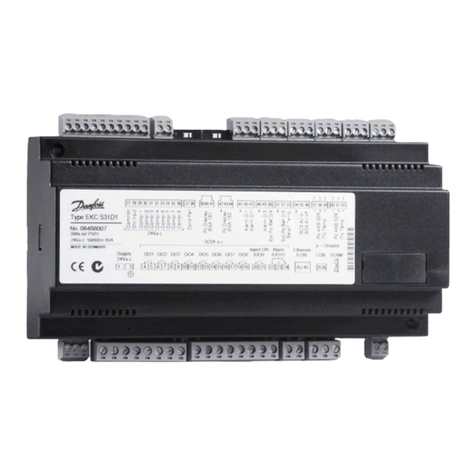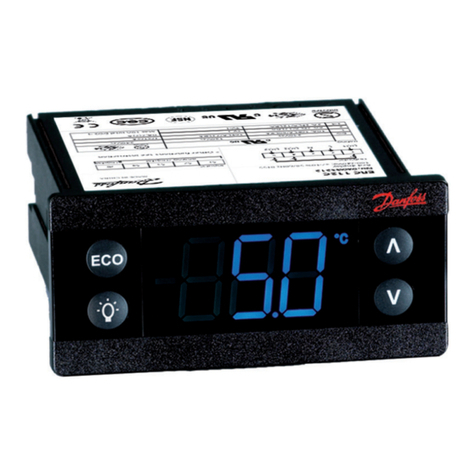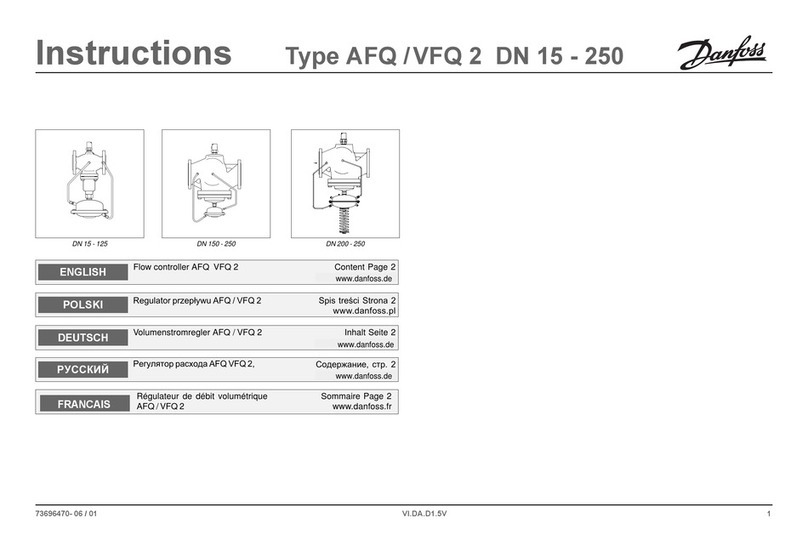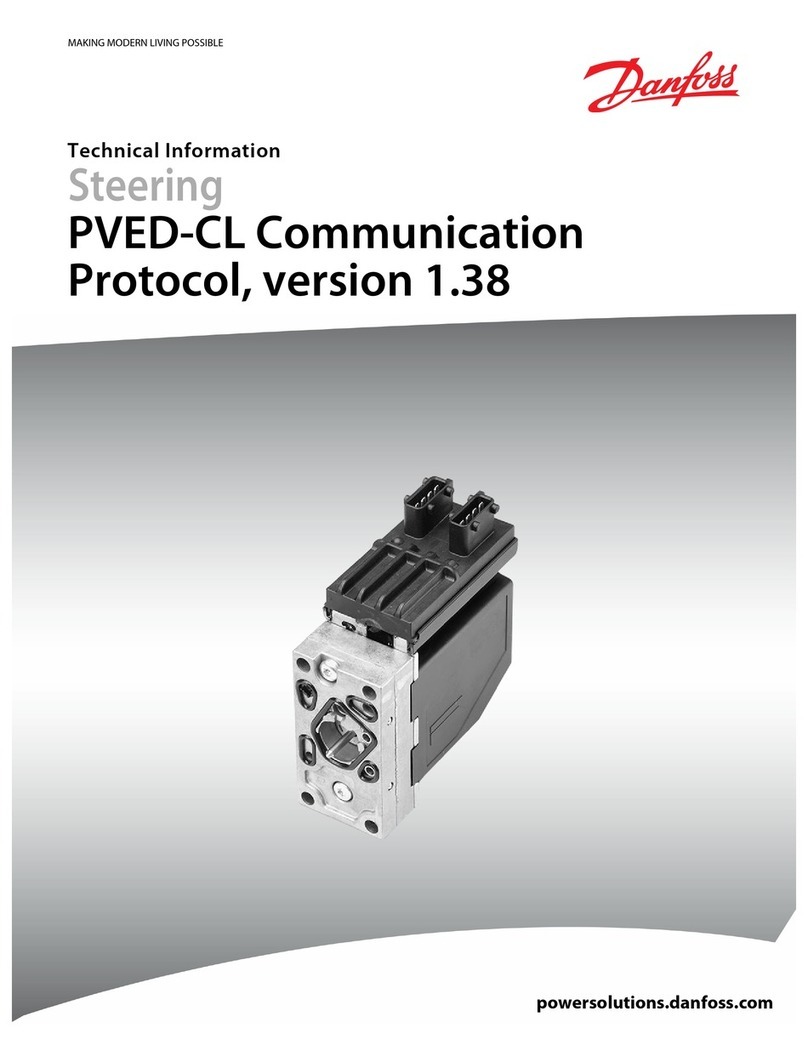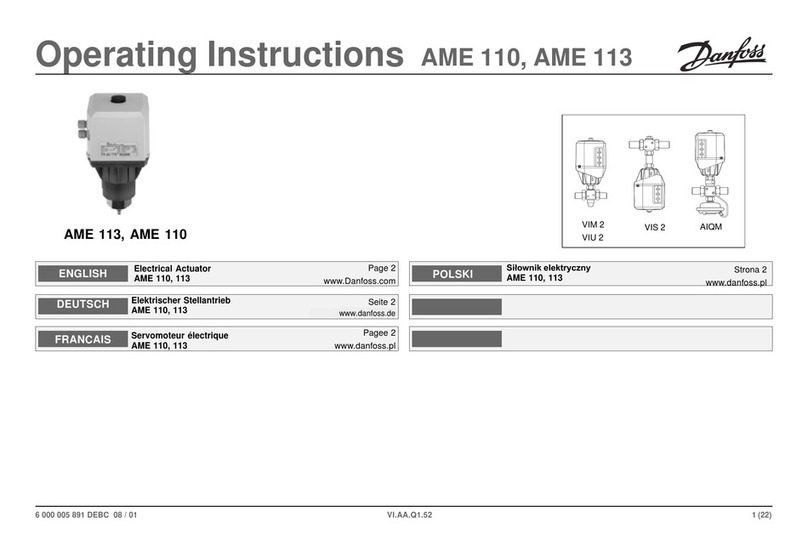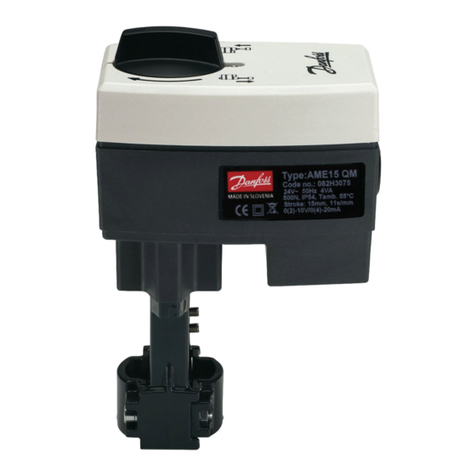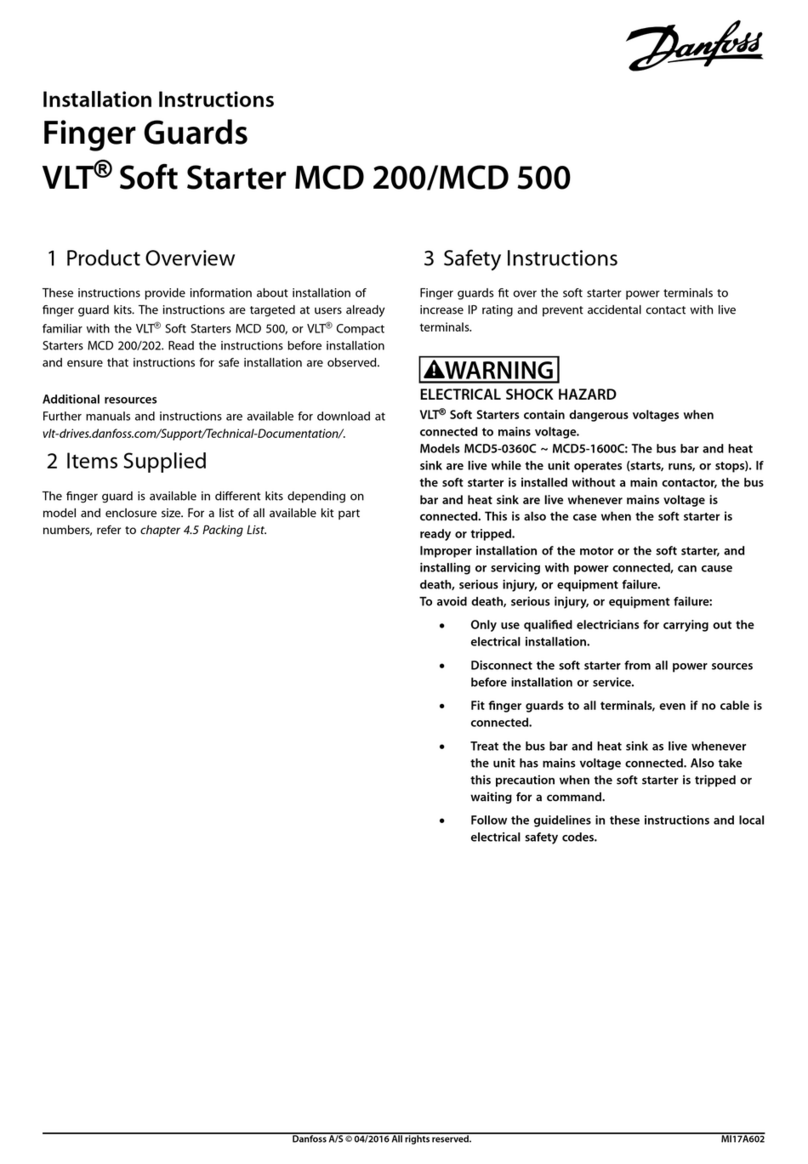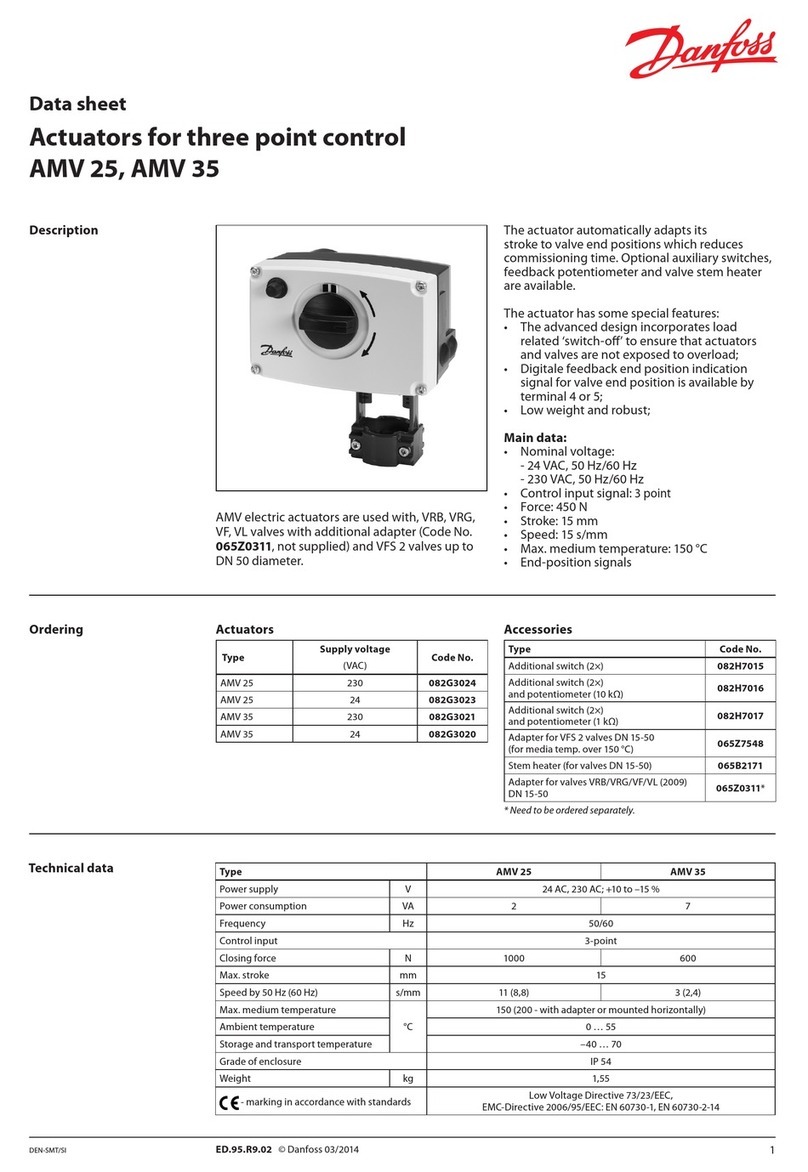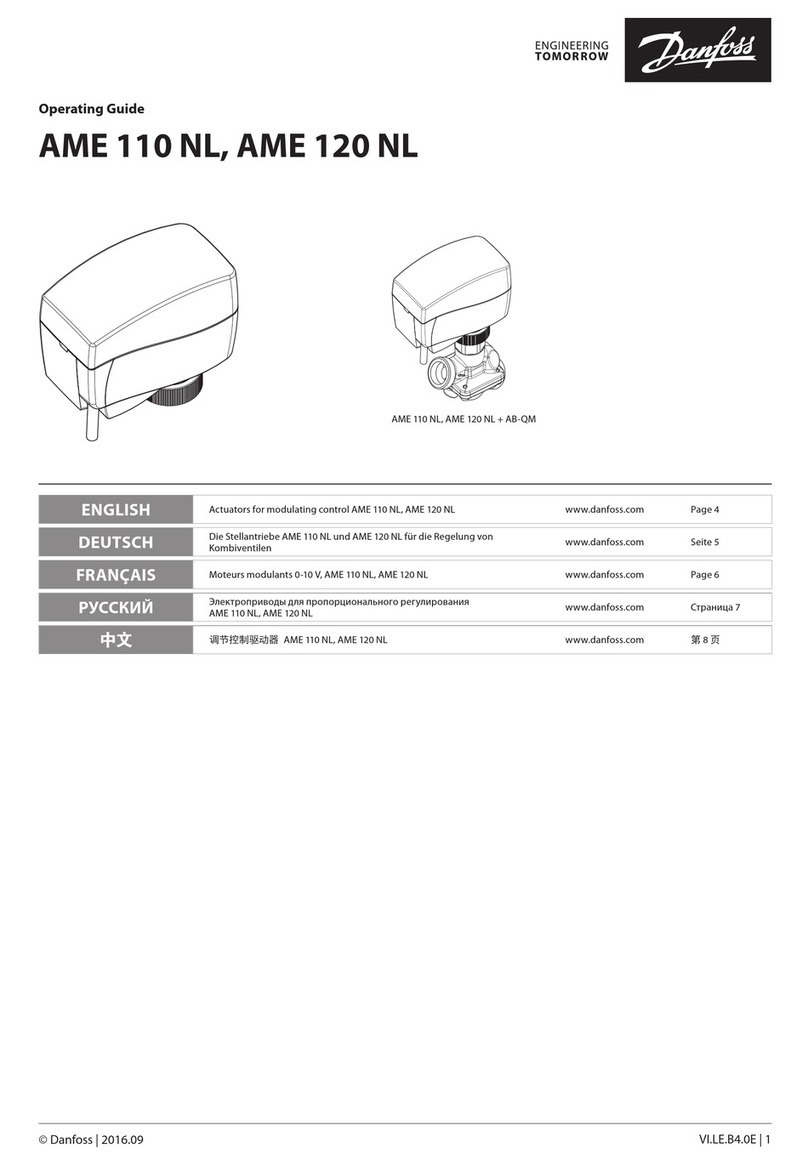
THEORY OF OPERATION
The MCV105C Electric Displacement Control (EDC) is a
two-stage electrohydraulic pump stroke control which uses
mechanical feedback to establish closed loop control of the
swashplate angle of Danfoss Medium Duty
Pumps.
The first stage, the MCV116A Pressure Control Pilot, is a
torque motor actuated, double-nozzle flapper valve that
produces a differential output pressure proportional to the
applied electrical signal. The second stage uses the differ-
entialpressureto drive a linear motion piston which actuates
a rotary spool through a cam and ports oil to the pump servo
piston. The second stage spool configuration allows a null
deadband (for machine safety) in the pump’s output while
maintainingoptimumdynamicresponsetocontrolcommands.
A command source such as a control handle or electronic
controller applies a dc current signal to the pilot stage of the
MCV105C Electric Displacement Control. The input current
commands the pilot’s torque motor stage, a bridge network
consisting of an armature mounted on a torsion pivot and
suspendedin the airgapof amagneticfield. Two permanent
magnets polarized in parallel and a connecting plate form a
frame for the magnetic bridge. At null the armature is
centeredintheairgapbetweenthemagnet’s opposingpoles
by the equivalence of their magnetic forces and the null
adjust centering springs. As input current rises, the end of
thearmature becomes biased either north or south, depend-
ing on the direction of the current. The resulting armature
movement is determined by the amperage of control current
and the differential pressure feedback forces.
The magnetic bridge output, flapper torque, in turn controls
the hydraulic bridge ratio. At null, the flapper is centered
between two nozzles. Upstream from each nozzle is an
orifice which provides a nominal pressure drop when the
system is at null. Between the nozzle and the orifice on each
side is a control port. As the torque motor shifts the flapper
away from one nozzle toward the other, a differential control
pressure results, the high side being the one nearer the
flapper. Fluid pressure rises on this side and moves the
flapper back towards null. When the torque output from the
motor equals the torque output from the pressure feedback,
the pilot system is in equilibrium. It is this pressure feedback
that makes the pilot a stand-alone closed loop pressure
control valve.
The second stage of the EDC uses a piston and rotary valve
arrangement that serves to separate the null deadband from
the feedback, giving both safety against null drift and quick
dynamic response to command changes.
The second stage’s null adjust is set with the modulating
spring compressed to the equivalent of 12 psi, which is the
amountof differential pressure required to move the actuator
spool one direction or the other. This is a factory setting that
defines the width of the actuator spool deadband and cannot
bechanged. By tighteningorloosening thenulladjust screw,
the fixed deadband is moved toward or away from the “A”
control port.
As differential control pressure (C1 - C2) rises beyond the 12
psi deadband, the actuator piston moves in one direction or
theother,pivotingacamwhichturnsarotaryvalve. Whenthe
valve turns far enough, oil is ported to the pump servo piston,
causing rotation of the swashplate in one direction or the
other. As the swashplate turns, an attached valve sleeve,
concentric with the rotary valve, turns and closes off the oil
being ported to the servo piston. Thus the swashplate angle
is forced to follow the angular input of the rotary valve.
PERFORMANCE
RATED CASE PRESSURE
40 psi operating pressure
MAXIMUM HYSTERESIS
3 mA (single coil, 643 ohm)
15 mA (single coil, 23 ohm)
18 mA dual coil
SYMMETRY
Input current required to reach rated output in each
direction must be equal within 10%.
LINEARITY
10% maximum of swashplate angle change between
anytwopointsexceptwithin5%ofthethresholdcurrent.
NEUTRAL LEAKAGE
0.65 gpm maximum at 200 psi across the valve with oil
of 145 - 160 SUS at 38° C (100 ° F).
POLARITY
A positive voltage applied to terminal B (single coil) or
terminals B or D (dual coil) will cause a pressure rise at
the C2 port.
NOMINAL FREQUENCY RESPONSE
90° phase lag and negative 6db amplitude ratio at
greater than 1.5 Hz (defined without orifices in A and B
ports and a charge pressure of 300 psi. The average
currentinput is 40mAwith asinewave inputof ±15 mA.)
See the Amplitude and Phase Response Curves.
STEP RESPONSE (Null to 63% full stroke)
The response to a current step input of plus or minus 85
mAwill resultinapumpstroke responsetimeof 0.5 ±0.1
second to 63% of full stroke.
STEP RESPONSE (full to full), maximum
The response from full forward stroke to full reverse
stroke varies per orifice size:
Orifice Size In InchesResponse In Seconds
(± .9 seconds)
No Orifice 1.2
0.0372.7
0.0471.7
0.0551.3
0.0640.9
© Danfoss, 2014-05 11152452 • Rev AA • May 2014 7
